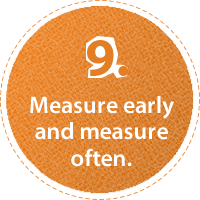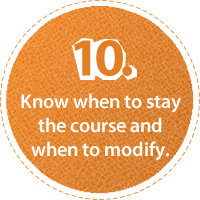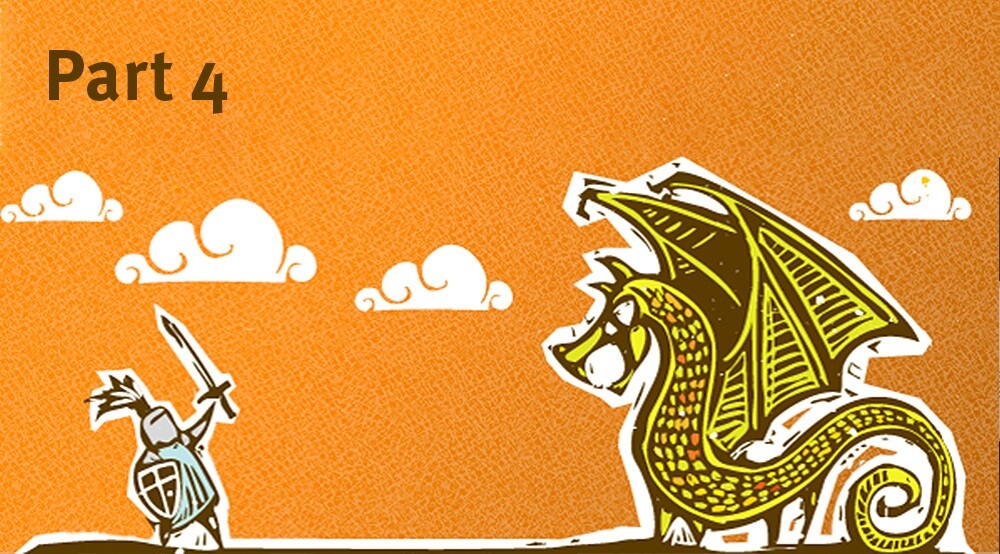To be a Challenger Brand takes fearlessness – the audacity to dream, the confidence to begin and the dedication to continue.
Throwing down the gauntlet, however, is not where the battle ends. At least as important is the sustained effort that follows, gradually chipping away at the dominance of the market leader, defining a space for the Challenger Brand in the minds of consumers.
Yield has developed a distinct set of best practices shared by successful Challenger Brands. It is a journey we have led many of our clients through, and a journey we have taken ourselves.
Early in this series, we focused on the fundamentals of your approach: Establish a distinctive point of difference. Find the white space. Take educated risks. Next we discussed three insights crucial to beginning the Challenger Brand journey: Narrow your target. Find channels you can own. Be disruptive. Last time we explored two critical internal challenges integral to the ongoing success of the Challenger Brand: Ensure internal alignment from the beginning. Invest for the long term.
This week, the two final fundamentals – both focused on managing the progress of a Challenger Brand as success begins to build: Measure early and measure often. Know when to stay the course and when to modify.

9. Measure early and measure often.
Measurement is critical to identifying success, and in a Challenger Brand scenario, the earlier you can determine where your efforts are resonating with your target, the more efficiently you can build on your foundation. To make measurement meaningful, you need to establish what Key Performance Indicators (KPIs) will be used to define success, determine which methodologies will best deliver that information, and have a plan for operationalizing the results you generate. To be of value, measurement must be meaningful, accurate and actionable.
There are three basic pillars to useful measurement: Business Results, Channel Performance and Engagement. Each play a role in the way you move forward.
-
- Business Results simply track the difference you are making – the number of people in the showroom, the amount of product that flies off the shelf, the number of visits to the website. It is the first, overarching assessment of whether your message has value for your target.
- Channel Performance measures which channels are generating the best value – the reach of the campaign, the number of impressions ads receive, and the ultimate cost per impression. It allows you to determine where the most efficiency is found and is crucial to evolving your media strategy.
- Engagement measures which messages and media are attracting the most involvement. In the digital space, page views, time on site, referral tracking and data capture returns tell you which messages are meaningful to your consumer, and allow you to cater more to these interests moving forward.
Our recruitment campaign for mining giant Vale depended heavily on understanding which messages – in which media – generated the most conversion rates and online applications. It allowed us to understand where candidates were geographically, how they were learning about the campaign, and what information they sought when they began the application process – all of which allowed us to modify subsequent efforts.

10. Know when to stay the course and when to modify.
Dove’s Campaign For Real Beauty is one of the most successful and best recognized Challenger Brand stories. And it ticks many of the boxes outlined in this series – it’s disruptive, takes an educated risk, targets a distinct psychographic audience, invests for the long term, and through its concentration on web video it dominates specific media channels. But it is perhaps under-recognized as an example of knowing when to stay the course and let a campaign build, and when to learn from experience and modify. Because in a sense it does both.
A consistent message, as we have discussed, is critically important to making the most of a limited budget. But understanding which nuances of an early success hold the most promise – and then altering course ever-so-slightly to take advantage of those insights – can help create a unique, ownable position that defines a Challenger Brand.
Dove’s Campaign For Real Beauty began in 2004 as a simple idea: Real women in ads for beauty products. It was a brilliant idea. Simple. Ownable. Disruptive. But it uncovered something more specific and significant that made the advertising resonate. It was about self-esteem, about realistic self-image, about the messages we send to our daughters. Those nuances allowed Dove to realign the campaign ever-so-slightly and carve out a more unique leadership position. The Dove Self-Esteem Fund, the globally-awarded “Evolution” viral video and the overwhelming global success of the campaign came as a result of the refinements, creating a truly iconic campaign and making a Challenger Brand a leader.
Yield is proud to play a stewardship role in the development of a number of successful Challenger Brands across a variety of categories, from Financial Services to Automotive, Consumer Products and Professional Services. For detailed case studies visit our website at www.yieldbranding.com. To find out more about how Yield can help your brand, contact Ted Nation at 416-588-4958 ext 245 or at tnation@yieldbranding.com.






